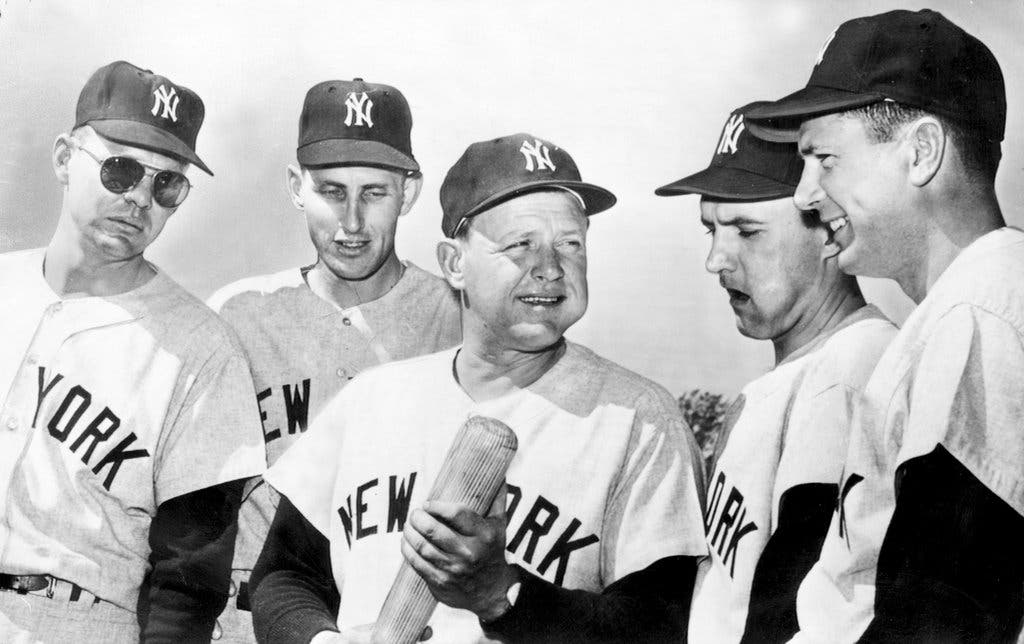Every Friday, we will be taking a look back at the career of a critical player in New York Yankees history that doesn’t quite get the recognition they deserve. When looking at the storied history of the Yankees names like Babe Ruth, Mickey Mantle, and Derek Jeter quickly come to mind. Today, we will be looking at those players who played a critical role. Simply put, without these individuals, the Yankees wouldn’t have been the Yankees.
You can find the previous editions here:
Elston Howard
Chris Chambliss
Mario Duncan and Luis Sojo
Frank Crosetti
Graig Nettles
Roy White
Earle Combs
Tommy Henrich
Mel Stottlemyre
Jeff Nelson and Mike Stanton
This week we will be moving off the field and into the dugout. The Yankees have a history of famous managers led by Casey Stengel, Joe McCarthy, Miller Huggins, and Joe Torre. These managers have all play critical roles in developing the Yankees but today we will be looking at the man who led the Yankees through the highs of the 60s and the lows of the 70s, “The Major,” Ralph Houk.
Early Life and Playing Career
Houk was born in Lawrence, Kansas on Aug. 9, 1919, on a cattle farm. Houk developed as a two-star athlete and found himself playing baseball and football for the local Lawrence High School. During his high school state championship game, Houk, playing quarterback, ran for three touchdowns. His high school efforts would earn him scholarships to the University of Kansas and University of Oklahoma but Houk wanted to pursue a college education and a career in baseball. At 19, Houk would sign with the Yankees.
Houk’s baseball career was temporarily delayed in 1944 when he was sent to France as a second lieutenant in the U.S. Army. Overseas, he found himself in the middle of the Battle of the Bulge. After two of his fellow officers were killed, Houk became the highest-ranking officer and helped to hold the town of Waldbillig. For his efforts, he was awarded a Silver Star. He later earned a Bronze Star and a Purple Heart while achieving the rank of First Lieutenant.
In 1946, Houk returned to baseball and made his Yankees debut the following season. Houk would play in the Yankees organization until after the 1954 season, but mainly served as a bullpen catcher. Despite his limited playing time, Houk became one of manager Casey Stengel’s most trusted players. His ability to understand every situation earned him the nickname “the answers man.” During his playing days, Houk would be apart of three championship teams.
Coaching Career
While Houk barely played his last few seasons, he started serving as more of a coach. Starting in the bullpen, Houk spent the ’53 and ’54 seasons with the Yankees. Houk served as the manager of a Yankees minor league affiliate before returning back to the Bronx in 1958. The next three seasons saw the Yankees bounce back to their winning ways but in 1960, after falling to the Pittsburgh Pirates in the World Series, the Yankees decided it was time to move on from Stengel and appointed Houk as manager.
In Houk’s first year as manager, the Yankees had an absolutely stacked roster. Houk notably moved slugger Roger Maris to the three position and dropped Mickey Mantle to fourth and watched his two sluggers battle to break Babe Ruth’s home run record. The Yankees ended up winning 109 games that season and dismantled the Reds to win the World Series. Houk also made the decision to start ace White Ford frequently on only three days rest leading to Ford’s best season and only Cy Young award.
The following season, Houk and the Yankees again won the World Series this time beating the San Francisco Giants. While the Yankees were swept by the Los Angeles Dodgers the following season, Houk became the first manager since Hughie Jennings in 1907-1909 to win the pennant in each of their first three seasons.
1964 saw more change as Yogi Berra replaced Houk as manager with Houk moved to the general manager role. The Yankees struggled under Berra and his successor Johnny Keane. Houk returned to the dugout. Unfortunately, he was unable to find his old success and the Yankees, with aging players continued to struggle. From 1966 to 1973 Houk’s Yankees struggled but managed to finish with a slightly above .500 record. After the ’73 season, the Yankees decided to move on from Houk.
During his Yankees’ career, Houk was part of six championship teams and helped to continue the Yankees’ success following the firing of Stengel. Houk’s leadership in the 1961 season made him a legend.
Later Coaching Career
Houk would be unemployed for only a short period of time before joining the Detroit Tigers as manager. Houk’s losing ways followed him to Detroit and they replaced the former Yankees’ skipper in 1978 after failing to reach the playoffs. Houk returned to baseball in 1981 as the manager of the Red Sox and despite leading the team to a better than .500 record he failed again to reach the postseason in his four years.
Houk’s final stop in baseball was in 1986 when joined the Twins front office as Vice President. Under his leadership, the Twins would win the 1987 World Series before Houk retired for good following the 1989 season. Two years after his retirement, the Twins would win another championship.




